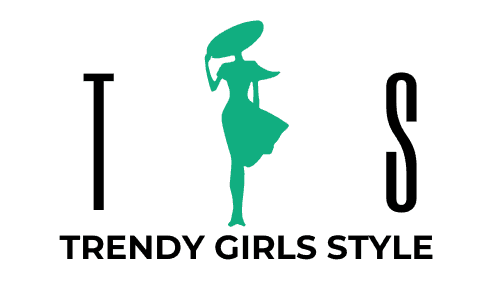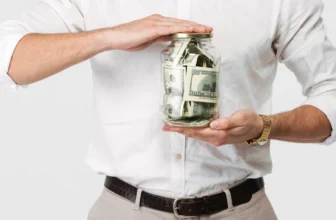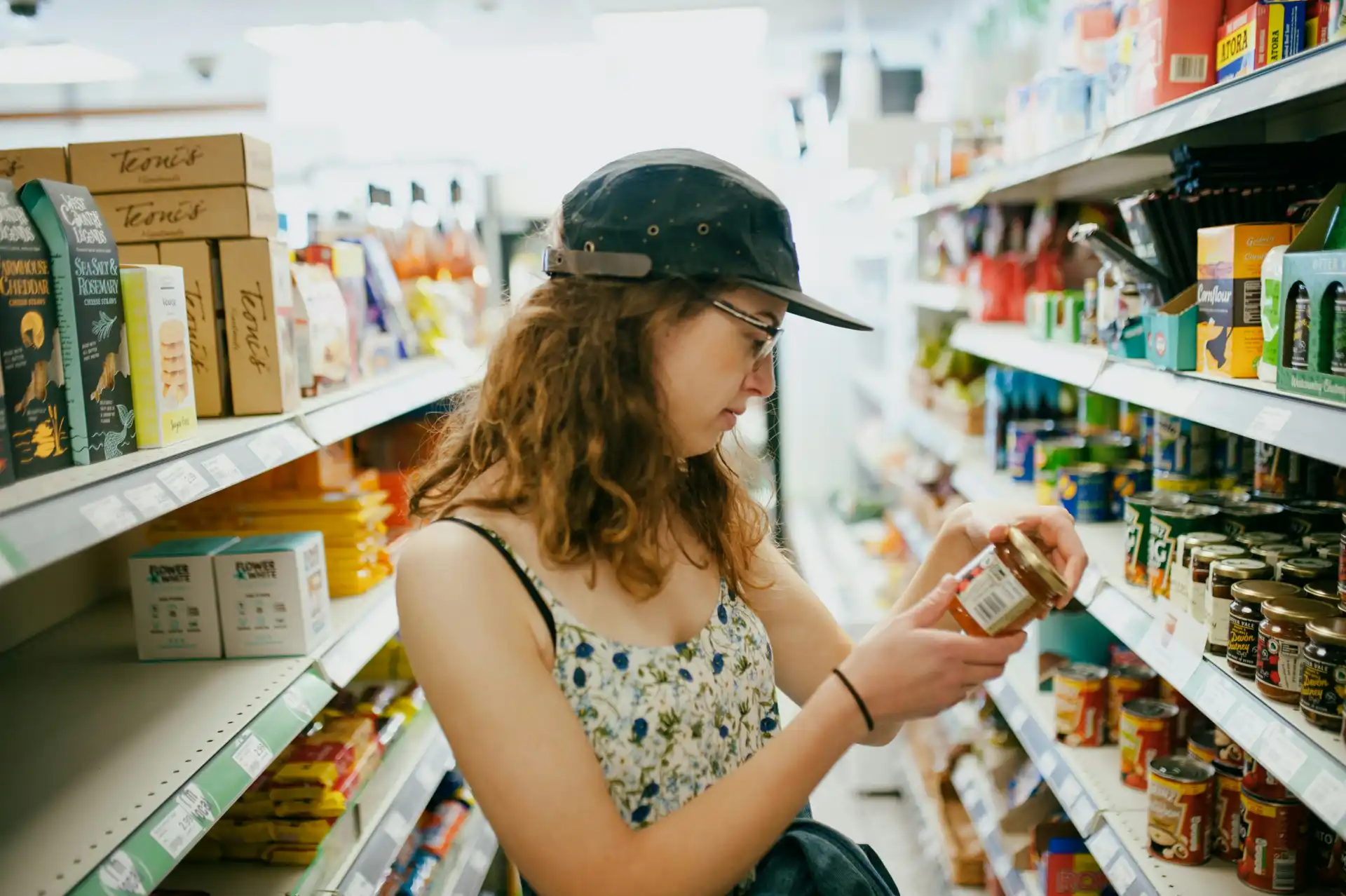
Ever walked into the grocery store for milk and bread, only to emerge with a cart full of items and a receipt that made your jaw drop? You’re not alone—the average shopper spends 50% more than intended, and it’s not due to poor self-control.
Grocery stores employ sophisticated psychological manipulation tactics designed to maximize your spending at every turn. From strategic store layouts to subtle sensory triggers, supermarket marketing tricks exploit basic human psychology to drive impulse buying behavior.
In this comprehensive guide, you’ll discover 23 specific tactics retailers use to manipulate your shopping decisions, plus actionable strategies to resist these techniques and potentially save hundreds of dollars annually on your grocery bills.
Store Layout & Design Manipulation
Ever wonder why you walk into a grocery store for milk and leave with a cart full of stuff you didn’t plan to buy? That’s not an accident. Stores spend millions studying store layout psychology to make you spend more money.
Fresh Produce: Your First Mental Trap
The moment you walk in, you see colorful fruits and vegetables. This isn’t about convenience. Fresh produce creates what psychologists call a “health halo.” When you start with healthy choices, your brain feels good about itself. This positive feeling makes you more likely to buy junk food later.
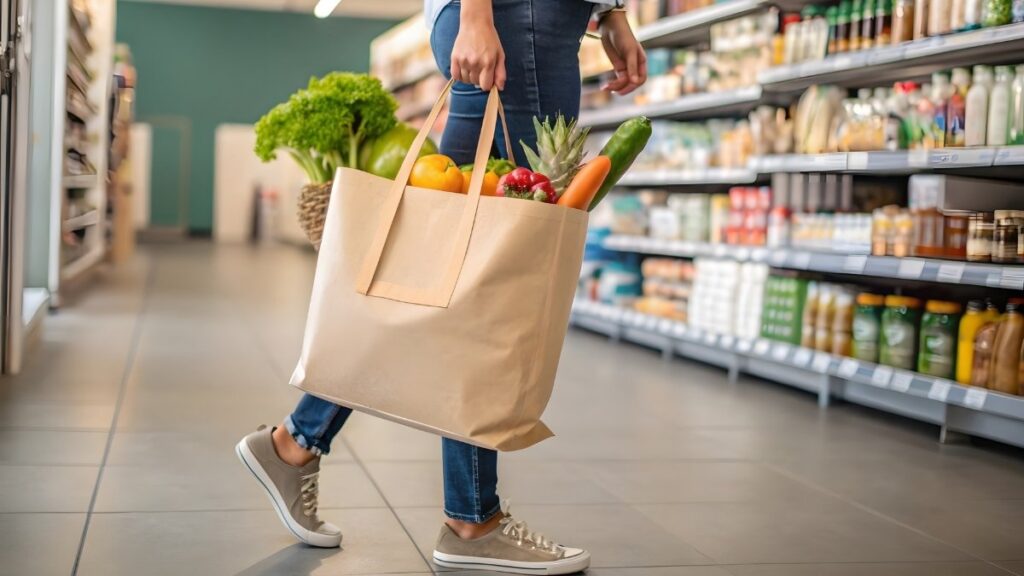
The bright colors and fresh smells also wake up your senses. Your brain switches from “quick errand” mode to “shopping experience” mode. Stores know this. That’s why produce sections get the best lighting and most space near the entrance.
Essential Items: The Back-of-Store Trick
Need milk, eggs, or bread? You’ll find them at the back of the store. Always. This grocery store design trick forces you to walk past hundreds of other products. The average person passes 300 items just getting to the milk.
This path isn’t random. Stores map out exactly where your eyes will look. They place high-profit items at every turn. By the time you reach the milk, you’ve seen dozens of things you “might need.”
One-Way Doors: The Commitment Device
Many stores have entrance doors that swing only one way. Some even have those one-way turnstiles. This seems like a small thing, but it changes your brain’s commitment level.
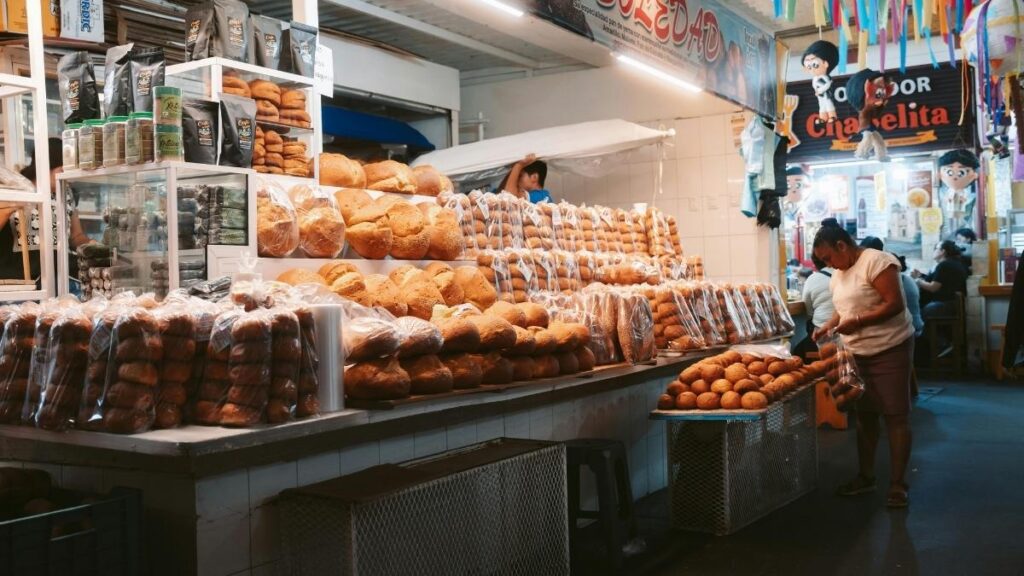
When you can’t easily turn around and leave, you feel more invested in shopping. Psychologists call this the “foot in the door” effect. Once you’re committed to being inside, you’re more likely to buy things.
No Windows, No Clocks: Time Distortion
Look around next time you shop. Most grocery stores have no windows and no clocks. This is intentional time manipulation. Without natural light or time markers, you lose track of how long you’ve been shopping.
Studies show after 40 minutes of shopping, most people stop making rational decisions and shop emotionally. Stores want you in this emotional state. That’s when you buy the fancy cheese and expensive wine you don’t really need.
Layout Changes: Slowing Down Speed Shoppers
Just when you know where everything is, stores move things around. This frustrates regular shoppers, but it’s calculated. When you can’t find your usual items quickly, you spend more time looking. More time means more opportunities to notice other products.

Stores track which customers are “speed shoppers” versus “browsers.” The speed shoppers hurt profits because they grab what they need and leave. Layout changes convert speed shoppers into browsers.
The Shopping Flow Design
Smart stores design a specific path through their aisles. They use end displays and wide aisles to guide your movement. This creates what retail experts call “shopping flow.”
The flow leads you past high-margin items first. Then it guides you through sections in an order that encourages impulse buying. Snacks come after you’ve made healthy choices. Expensive items appear when you’re already committed to spending.
Psychological Anchoring Through Design
The store’s physical design also creates mental anchors. Large, impressive displays make regular prices seem reasonable. Wide aisles make you feel relaxed and willing to browse. Narrow aisles near sale items create urgency.
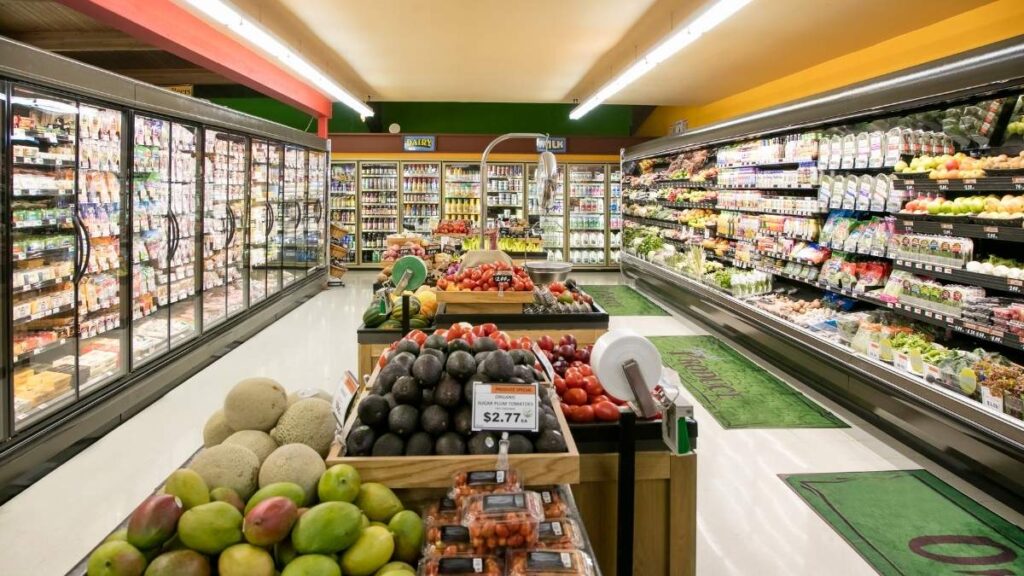
Even the shopping cart return areas are designed psychologically. They’re positioned to make you walk past one more tempting display on your way out.
This store layout psychology works because it matches how our brains naturally process decisions. Stores don’t force you to buy anything. They just make it easier to say yes to purchases you’re already considering.
Sensory Marketing Tactics
Your nose might be making your grocery decisions. Stores use sensory marketing to trigger emotions and memories that make you buy more. These tactics work below your conscious awareness.
Bakery Smells: The Appetite Trigger
That amazing bread smell hits you the moment you walk in. Most stores pump bakery scents through their ventilation systems. This isn’t just pleasant atmosphere. Scent marketing triggers real physical responses.
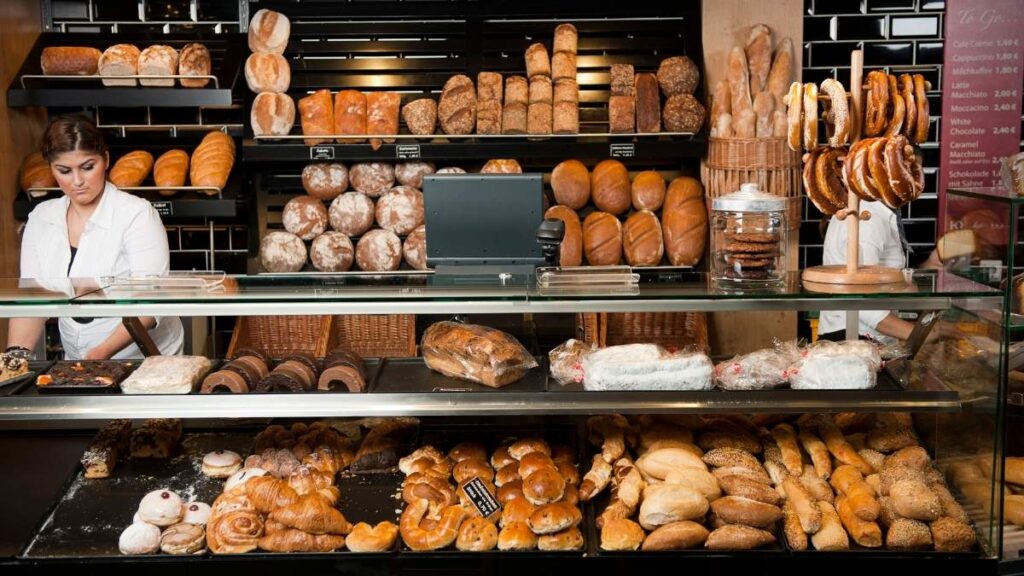
The smell of baking bread releases endorphins in your brain. It also makes you hungry, even if you just ate. Hungry shoppers buy 64% more items than those who aren’t hungry. The bakery scent creates artificial hunger.
These smells also trigger emotional memories. Fresh bread reminds people of home, comfort, and family meals. When you feel emotional, you make more impulse purchases. Stores know this connection between scent and emotion.
Music: The Tempo Trap
Pay attention to the background music next time you shop. It’s probably slow and relaxing. This isn’t random playlist selection. Studies found slow music increased grocery sales by 38.2% compared to fast music.
Slow music makes you walk slower through the store. Slower walking means more time looking at products. More looking time leads to more purchases. Fast music makes people hurry, which hurts sales.
The volume matters too. Moderate volume music keeps you relaxed and browsing. Loud music stresses people out and makes them leave faster. Stores carefully test different music combinations to find the perfect shopping soundtrack.
Strategic Lighting: Making Products Irresistible
Store lighting isn’t about helping you see. It’s about making products look better than they actually are. Different sections use different lighting colors and intensities.
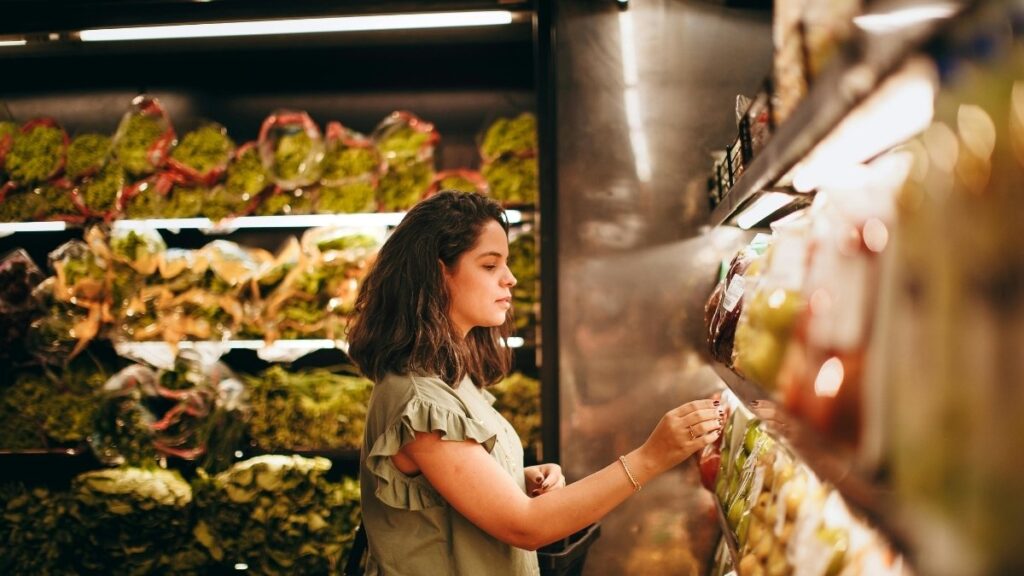
Produce sections use bright, slightly blue-tinted lights. This makes fruits and vegetables look fresher and more colorful. Meat sections use red-tinted lights that make meat look redder and more appealing.
Bakery sections use warm, yellow lights that make baked goods look like they’re still warm from the oven. Even the freezer sections have special lights that make frozen foods look fresh and appetizing.
The Fresh-Picked Illusion
Those misters spraying water on vegetables aren’t keeping them fresh. Most produce is already packaged and doesn’t benefit from extra water. The misting creates a “fresh-picked” illusion in your mind.
The sound of water spraying and the sight of droplets on vegetables triggers thoughts of freshness and quality. This makes you willing to pay higher prices for produce. It also makes the whole produce section feel more natural and appealing.
Some stores even add subtle nature sounds near the produce section. Birds chirping or gentle water flowing sounds reinforce the “fresh from the farm” feeling.
Free Samples: The Reciprocity Weapon
Free samples aren’t about letting you try before you buy. They’re psychological weapons that trigger reciprocity bias. When someone gives you something free, you feel obligated to give something back.
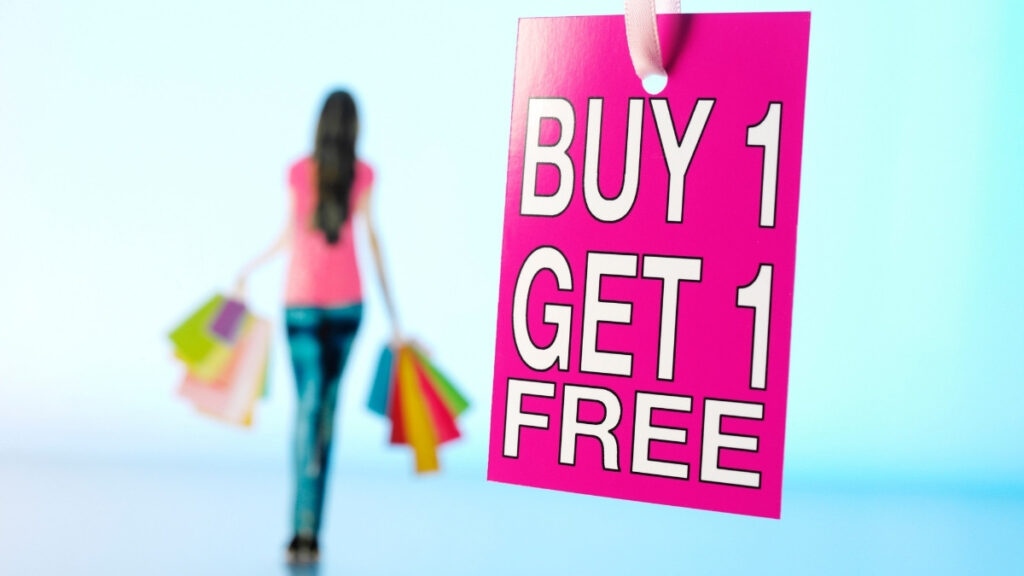
This bias is so strong that people often buy products they don’t even like after trying free samples. Your brain feels indebted to the store, even though the sample cost them pennies.
Free samples also get you to break your shopping routine. When you stop to try something, you’re more likely to notice other products around the sample station. This interruption in your planned shopping path leads to unplanned purchases.
Temperature and Air Flow Manipulation
Stores carefully control temperature and air circulation to affect your shopping behavior. Slightly cool temperatures make people want to move faster through cold sections, reducing time to compare prices.
Warm temperatures in certain areas make people feel relaxed and willing to browse longer. The air flow carries scents more effectively and keeps you comfortable enough to shop longer.
These sensory marketing tactics work together to create what retail experts call an “sensory shopping experience.” Your brain processes these signals automatically, influencing your decisions before you consciously realize what’s happening.
Product Placement Psychology
Where products sit on shelves determines whether you buy them. Stores use product placement psychology to guide your choices without you realizing it. Every inch of shelf space is planned to maximize profits.
Eye Level is Buy Level
The most important rule in grocery stores: eye level is buy level. Products at adult eye level sell five times better than items on bottom shelves. Stores charge companies extra money for eye-level placement.
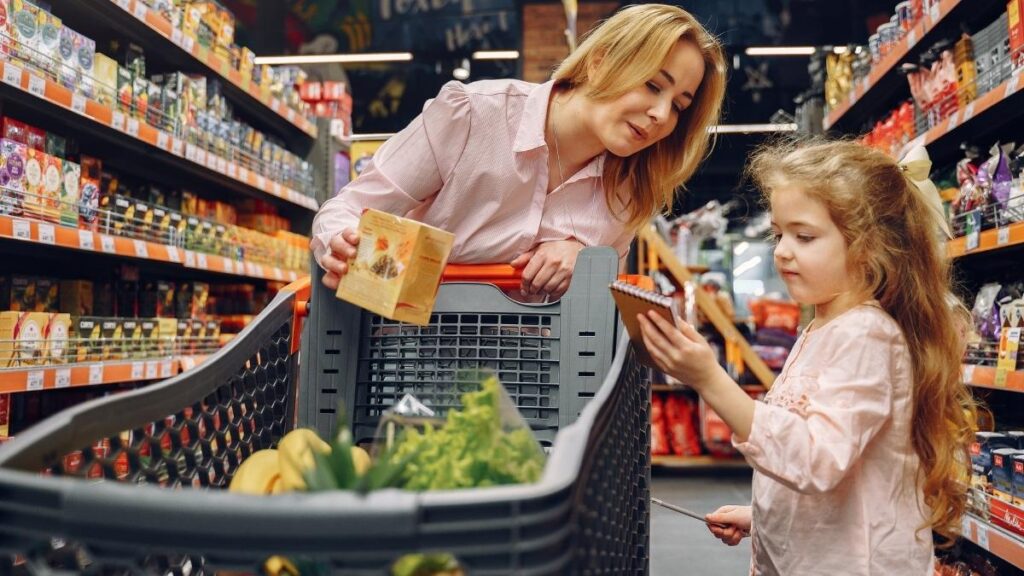
This isn’t just about convenience. Your eyes naturally scan horizontally first. Items at eye level get the most attention and consideration. They also seem like the “normal” or “recommended” choice.
Stores put their highest-profit items at eye level. Generic brands go on bottom shelves where you have to crouch down to see them. Specialty or premium items go slightly above eye level to seem “elevated” or special.
Kids’ Eye Level: The Cereal Strategy
Walk down the cereal aisle with a child, and watch what happens. All the colorful, sugary cereals sit at kids’ eye level. This isn’t coincidence. It’s calculated marketing to children.
Kids can’t see the healthy cereals on higher shelves. But they spot cartoon characters and bright colors immediately. Parents end up buying these cereals to avoid tantrums, even though they cost more and offer less nutrition.
This same strategy works throughout the store. Candy, cookies, and snacks get positioned where children can see and grab them easily. Stores know kids influence 70% of family grocery purchases.
Cross-Merchandising: The Convenience Trap
Ever notice pasta sauce sitting right next to pasta? Or salad dressing near bagged lettuce? This is cross-merchandising, and it’s designed to increase your total purchase amount.
Cross-merchandising works because it feels helpful. You’re buying pasta anyway, so grabbing sauce seems logical. But stores carefully choose which items to pair together. They match low-profit items with high-profit ones.
The pasta might have a small profit margin, but the premium sauce has a huge markup. By making the pairing seem convenient, stores get you to buy the more profitable item without thinking about it.
Endcap Displays: The Impulse Goldmine
Those big displays at the end of aisles are called endcaps. Endcap displays can sell up to eight times better than items on regular shelves. They’re impulse buying powerhouses.
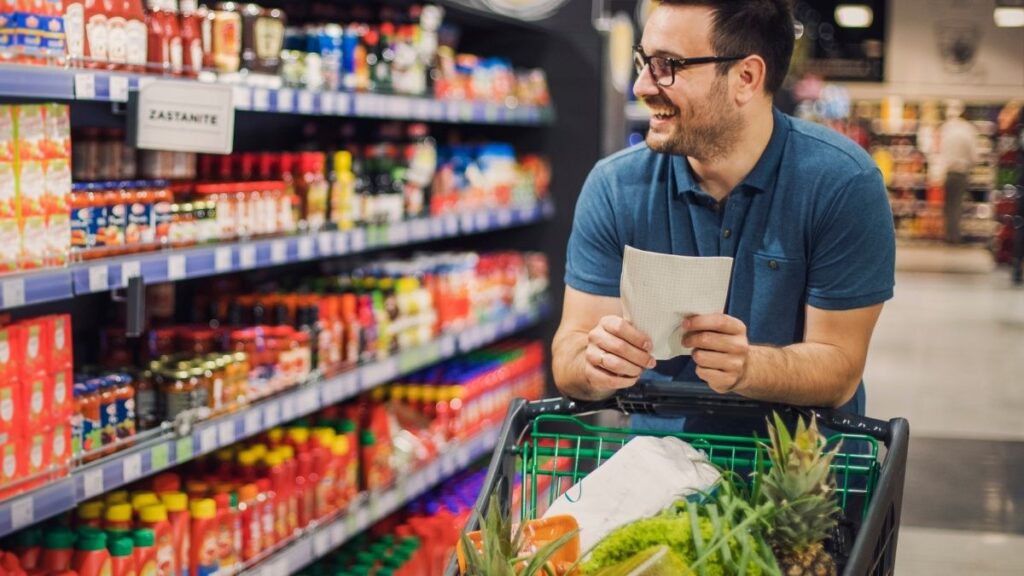
Endcaps work because they break your shopping routine. You’re walking down an aisle focused on your list, then suddenly see a big display of something interesting. This interruption makes you pause and consider buying something unplanned.
Stores rotate endcap displays frequently to keep them feeling fresh and urgent. Limited-time offers and seasonal items get endcap placement because they create urgency to buy now.
Checkout Lane Temptations
The checkout area is impulse purchase paradise. You’re standing still with nothing to do except look around. Your defenses are down because you think your shopping is finished.
Checkout lanes feature small, inexpensive items that seem harmless to add to your purchase. Candy, magazines, batteries, and gum all have high profit margins. These “add-on” purchases can increase your total bill by 25%.
The positioning psychology here is brilliant. Items are at different heights to catch eyes while you’re standing, crouching to manage kids, or leaning on your cart. Every angle is covered.
The Decoy Effect in Action
Stores use decoy pricing to make certain products seem like better deals. They’ll place three similar items together: a small size, a medium size, and a large size. The medium is priced to make the large seem like a great value.
This decoy effect works because your brain compares options relative to each other, not to absolute value. The expensive medium option makes the large size feel like a smart choice, even though you didn’t need that much product.
Premium Positioning Psychology
Expensive, premium items get special placement that makes them feel exclusive. They might be in locked cases, on special displays, or in dedicated sections with better lighting.
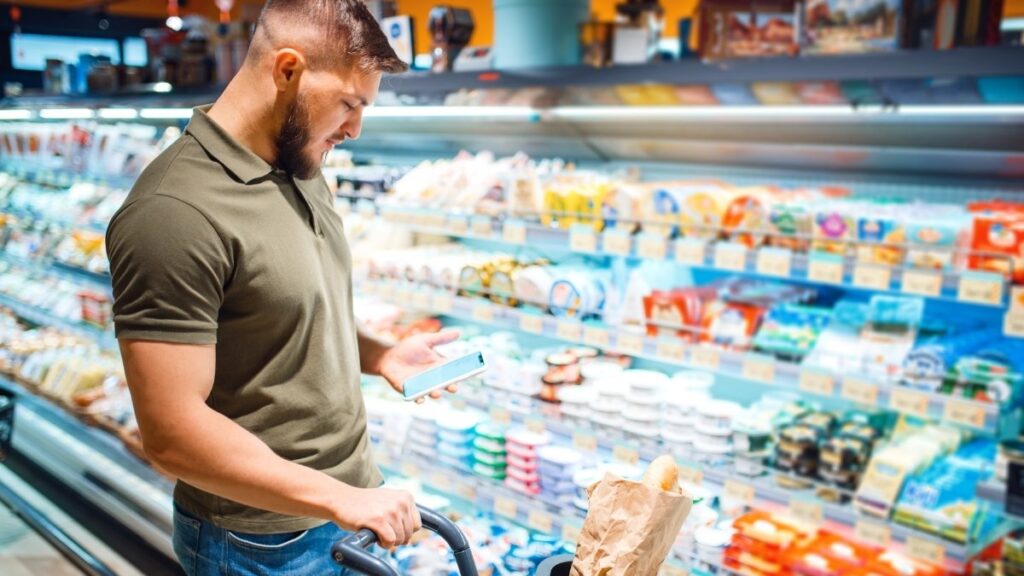
This positioning creates what marketers call “perceived value.” The special treatment makes products seem more valuable, even if they’re similar to cheaper alternatives. Your brain associates the special placement with higher quality.
Bulk Display Psychology
Large bins and bulk displays make products seem popular and in demand. Even if you can buy the same item individually, the bulk presentation suggests other smart shoppers are buying lots of it.
These displays also make portion sizes seem normal. A huge bin of candy makes buying a large bag feel reasonable. The bulk presentation resets your mental baseline for what counts as a normal purchase amount.
This product placement psychology works because it matches how humans naturally make decisions. We use mental shortcuts and environmental cues to choose quickly. Stores simply arrange those cues to point toward more profitable purchases.
Pricing and Promotional Manipulation
The prices you see aren’t just numbers. They’re carefully designed to trigger specific responses in your brain. Pricing psychology can make identical products feel completely different in value.
Charm Pricing: The 99-Cent Trick
Why does everything cost $1.99, $9.99, or $19.99? This charm pricing strategy triggers what psychologists call the left-digit bias. The left-digit effect makes $1.99 appear significantly lower than $2.00 in consumers’ minds.
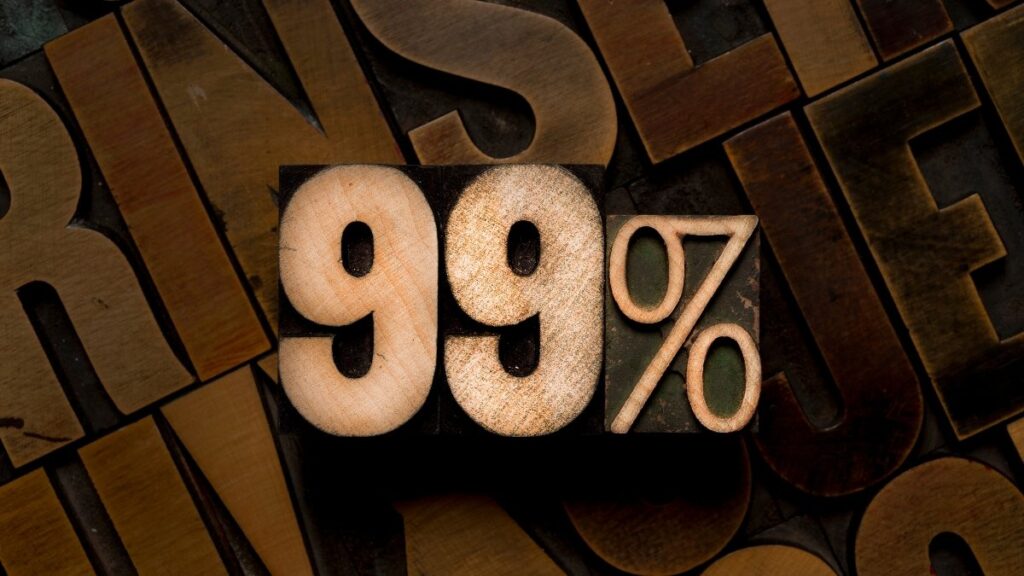
Your brain reads prices from left to right, but it gives extra weight to that first number. So $1.99 feels much closer to $1.00 than $2.00, even though it’s only one penny different. This bias is so strong it works even when people know about it.
Charm pricing increases sales by 30-60% compared to round number pricing. It works especially well on items you buy frequently, where you think you know the “normal” price range.
Bulk Buying “Deals” That Aren’t Always Cheaper
“Buy 2, Get 1 Free” sounds like a great deal. But stores use bulk deals to increase your total spending, not save you money. These promotions work even when the bulk price isn’t actually cheaper per unit.
Many shoppers don’t calculate the per-unit cost of bulk deals. They just see “free” or “50% off” and assume they’re saving money. Sometimes buying smaller quantities actually costs less overall.
Bulk deals also make you buy more than you need. That extra product often goes to waste, making the “deal” more expensive than buying just what you need at regular price.
Scarcity Marketing: The Fear Factor
“Limited Time Offer!” “Only 3 Left!” “Sale Ends Tomorrow!” These phrases trigger scarcity bias in your brain. When something seems scarce, you want it more and think it’s more valuable.
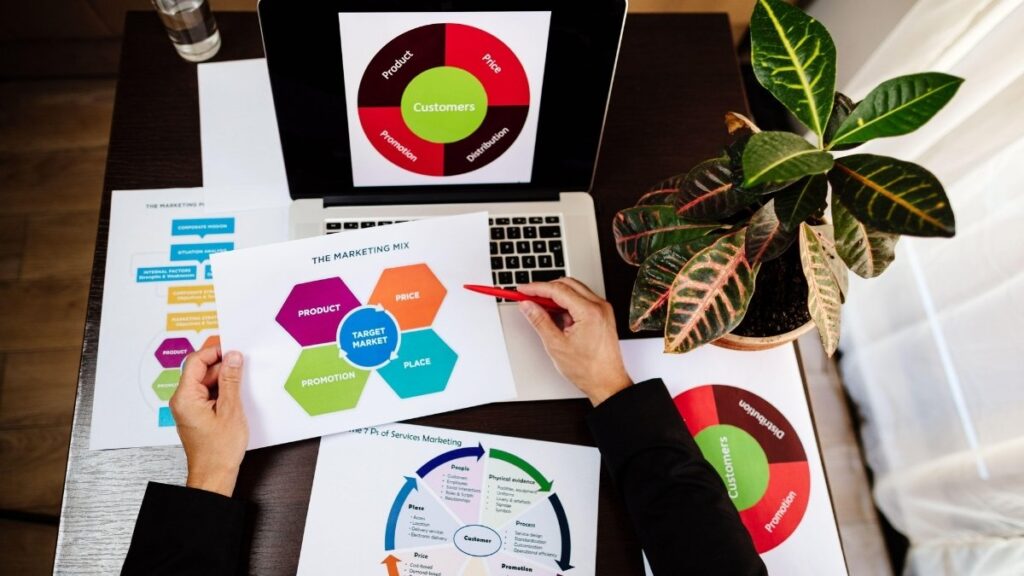
Scarcity marketing works because your brain evolved in environments where scarce resources were genuinely life-or-death important. Modern stores exploit this ancient instinct to create artificial urgency around sale items.
Most “limited time” offers aren’t really limited. Stores rotate similar sales constantly. But the scarcity language makes you feel like you need to buy now or miss out forever.
Decoy Pricing: The Three-Option Trap
Stores often display three sizes of the same product with strategic pricing. The medium size is priced high to make the large size seem like an amazing value. This is decoy pricing in action.
For example: Small for $3, Medium for $6.50, Large for $7. The medium price is a decoy. It’s so close to the large price that the large seems like the obvious smart choice. Few people buy the medium, but it increases large size sales dramatically.
This works because your brain evaluates value relative to available options, not absolute value. The decoy changes your reference point and makes other options seem better or worse.
Loyalty Programs: The Spending Escalator
Loyalty programs aren’t about rewarding good customers. They’re designed to increase how much each customer spends per visit. These programs work through several psychological mechanisms.
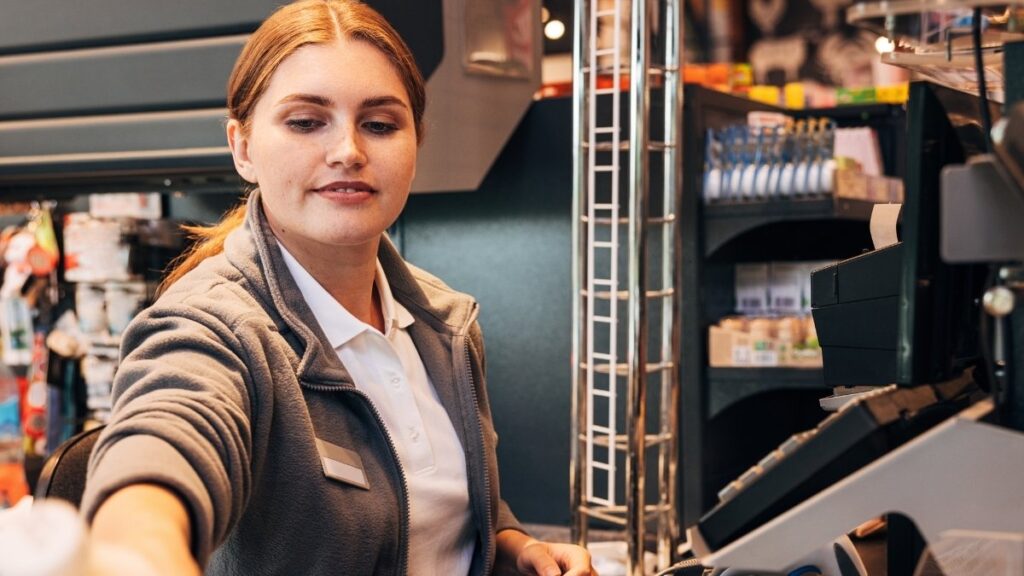
First, they create artificial investment in the store. Once you have points or rewards building up, switching to competitors feels like losing money. This locks you in as a customer.
Second, they encourage larger purchases through point multipliers and minimum spending thresholds. To get bonus points, you spend more than you normally would.
Psychological Anchoring Through Price Displays
Stores use high-priced items as anchors to make other prices seem reasonable. A $50 bottle of olive oil makes a $15 bottle feel like a good deal, even though you normally spend $5 on olive oil.
These anchors work even when you don’t buy the expensive item. Just seeing the high price changes your mental baseline for what counts as “expensive” versus “reasonable.”
Clearance tags and “Was/Now” pricing create anchors too. Seeing the old higher price makes the current price feel like a bargain, even if it’s still higher than competitors’ regular prices.
The Power of “Free”
The word “free” has magical psychological power. People will choose a free option over a better paid option, even when the math doesn’t make sense. “Free shipping on orders over $50” makes you spend $50 to avoid a $5 shipping fee.
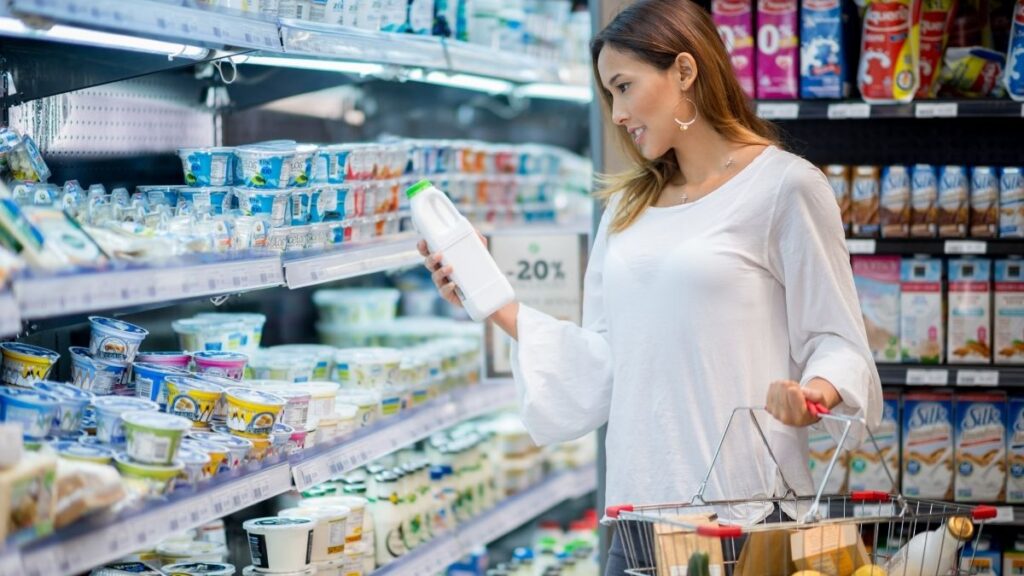
Free offers also trigger reciprocity bias. When stores give you something free, you feel obligated to buy something in return. This is why stores offer free samples, free gift wrapping, or free loyalty program membership.
Bundle Pricing Psychology
“Meal deals” and product bundles hide the individual item costs and make you buy more than you need. A lunch bundle for $8 seems reasonable, even though you only want the sandwich that costs $5 alone.
Bundles work because they reduce decision-making effort. Instead of choosing between multiple individual items, you make one bundle decision. This mental shortcut often leads to buying more than you planned.
These pricing psychology tactics succeed because they match how human brains make quick decisions. We use mental shortcuts that worked well in simpler environments but can be exploited in modern retail settings.
Shopping Cart & Equipment Psychology
The shopping cart you grab isn’t just a convenience tool. It’s a psychological device designed to make you buy more. Shopping cart psychology influences your spending from the moment you pick up that cart.
Larger Carts Drive Bigger Purchases
Doubling cart size led to 40% more purchases in controlled experiments. Larger carts don’t just hold more stuff. They change your mental baseline for what counts as a “full” shopping trip.
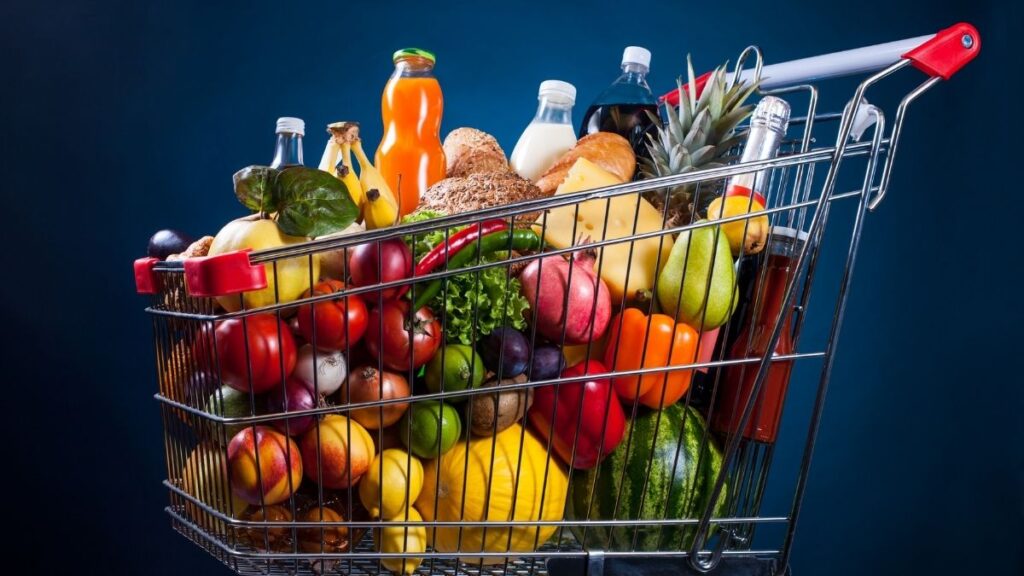
When you push a big cart, it looks empty even with several items inside. This creates anxiety and makes you feel like you haven’t bought enough yet. Your brain wants to “fill” the cart to feel like you’ve accomplished your shopping goal.
Smaller carts make the same number of items look like plenty. European stores often use smaller carts, and customers there typically spend less per trip than Americans with our oversized carts.
The Cart Anchoring Effect
Once you put that first item in your cart, you’re psychologically committed to buying something. This is the cart anchoring effect. The cart becomes your “sunk cost” that makes you feel obligated to use it.
Empty carts feel wasteful. Your brain wants to justify picking up the cart by filling it with purchases. This psychological commitment makes you less likely to leave the store empty-handed, even if you don’t find what you originally came for.
Stores position the shopping carts strategically at the entrance to encourage everyone to take one, even for quick trips. Once you have a cart, your shopping behavior changes completely.
Basket vs. Cart Psychology Differences
Shopping baskets create different psychological effects than carts. Baskets have weight limits that naturally control impulse buying. When a basket gets heavy, your arm gets tired and you become more selective about additional items.
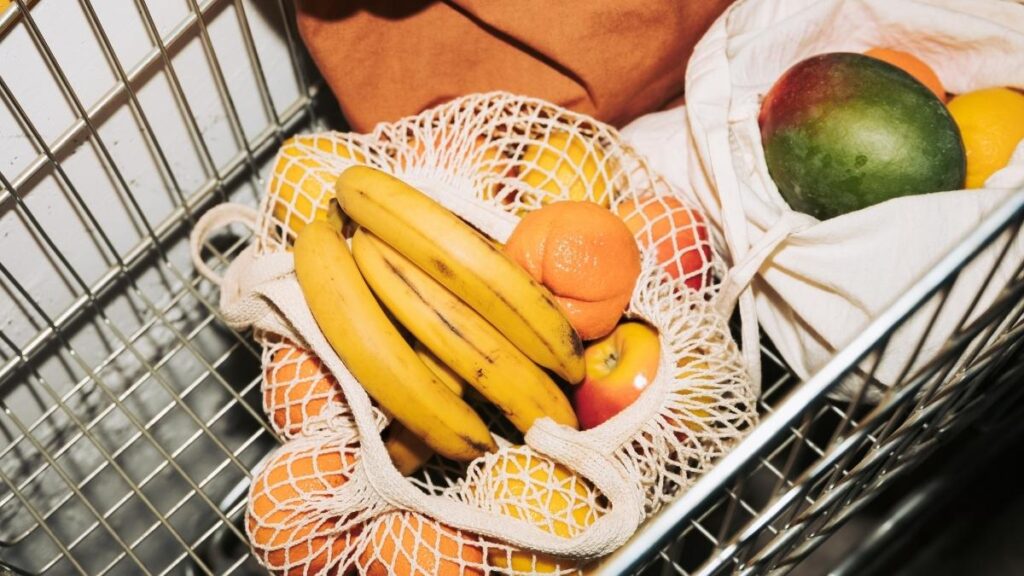
Baskets also keep you more aware of what you’re buying. You can see and feel every item you add. Carts hide items from view and remove the physical weight feedback that might make you reconsider purchases.
Studies show people buy 30% fewer items when using baskets instead of carts. But stores make baskets less convenient to get, smaller in size, and position them less prominently than carts.
The Rolling Momentum Effect
Push a cart through a store, and you develop momentum both physically and psychologically. The act of moving through aisles with a cart creates a rhythm and flow that makes you want to keep shopping.
This rolling momentum makes it hard to stop at just one or two items. Your body and brain get into “shopping mode” and want to continue the process. Quick trips become longer browsing sessions without you realizing it.
Carts also make it easier to justify “just looking” at sections you didn’t plan to visit. Since you’re already pushing the cart around, wandering through extra aisles feels effortless.
Strategic Cart Design Features
Modern shopping carts include features designed to encourage more spending. Cup holders keep you comfortable and browsing longer. Phone holders let you check digital coupons and lists, extending your time in store.
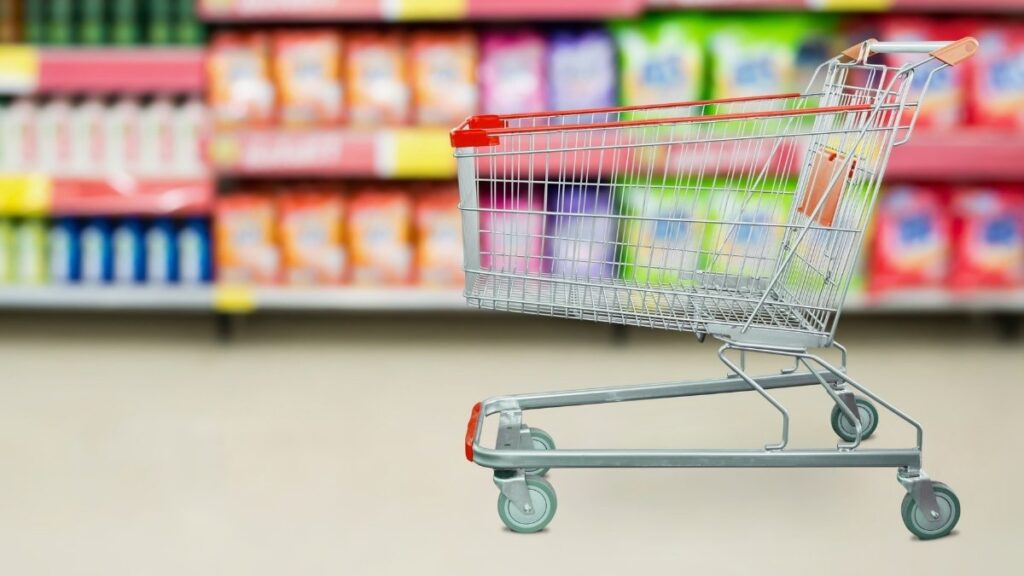
Some carts have split sections that make you organize purchases. This extra interaction with your items makes you more aware of what you’re buying, which paradoxically makes you feel more in control and willing to buy additional things.
Child seats in carts aren’t just convenience features. They make family shopping take longer and expose children to more products at their eye level. Kids in cart seats influence more purchases than kids walking alongside parents.
The Checkout Cart Trap
Even after you think you’re done shopping, your cart continues influencing you. In checkout lines, carts make it easy to add impulse items while you wait. You just toss items in without much thought.
Full carts also create social pressure. Other shoppers and cashiers see your cart contents, making you more conscious about your purchases. This social element can drive additional purchases to avoid appearing cheap or unprepared.
The final cart-to-car journey gives you one last chance to feel good about your purchases. Loading bags into your car creates a sense of accomplishment and acquisition that reinforces the shopping experience.
Shopping cart psychology works because it changes your physical relationship with the store and your purchases. The cart becomes part of your identity during the shopping trip, influencing decisions in ways you don’t consciously notice.
How to Resist These Tactics
Now that you know how stores manipulate your decisions, you can fight back. These resistance strategies help you stick to your budget and buy only what you actually need.
Make Detailed Lists and Stick to Them
Your shopping list is your defense against impulse purchases. But not just any list works. Create detailed lists with specific brands, sizes, and quantities. Vague lists like “snacks” leave too much room for manipulation.
Write your list at home when you’re not surrounded by tempting displays and marketing messages. Include estimated prices next to items. This price awareness makes you more conscious of your spending while shopping.
Organize your list by store layout if you shop the same store regularly. This helps you move efficiently through the store without getting sidetracked by displays and promotions you weren’t planning to encounter.
Set Specific Budget Limits
Bring exactly the amount of cash you want to spend, or set a firm spending limit on your card. Having a concrete budget number in mind makes you evaluate each potential purchase against your remaining funds.
Tell yourself the budget number out loud before entering the store. This verbal commitment makes the limit feel more real and binding. Break your budget down by category if needed: $20 for produce, $15 for dairy, etc.
Track your spending as you shop. Use your phone calculator or keep a mental running total. This awareness prevents the common problem of budget shock at checkout.
Use Smaller Baskets Instead of Large Carts
Choose a basket over a cart whenever possible. The physical weight limit naturally controls impulse buying. When your arm gets tired, you become more selective about additional items.
If you must use a cart, try using just half of it. Put your purse or reusable bags in one section to reduce the psychological “empty space” that makes you want to buy more.
For quick trips, don’t take any cart or basket. Carry items in your hands. This physical limitation forces you to stick to your original plan and avoid impulse additions.
Shop at Specific Times When Less Susceptible
Your brain makes different decisions at different times of day. Shop when you’re alert and not stressed. Avoid shopping when you’re hungry, tired, or emotional.
Weekend mornings often work well because you’re rested but not rushed. Avoid shopping right after work when you’re mentally drained and more susceptible to emotional purchasing decisions.
Don’t shop during promotional periods unless you genuinely need sale items. “Black Friday” and other high-pressure sale events are designed to break down your normal decision-making processes.
Wear Headphones with Upbeat Music
Block out the store’s carefully chosen background music by wearing headphones. Choose upbeat, energetic music that makes you want to move quickly through your shopping tasks.
Fast-tempo music in your ears counteracts the slow, browsing-inducing music stores play. You’ll naturally walk faster and spend less time looking at products you didn’t plan to buy.
This strategy also helps you avoid getting caught up in the store’s sensory marketing. Your own music creates a mental barrier against scent marketing and ambient manipulation.
Never Shop When Hungry
Hungry shoppers buy 64% more items than those who aren’t hungry. Eat a snack or full meal before grocery shopping. This simple step eliminates one of the most powerful psychological triggers stores use.
If you’re shopping during a meal time, eat something small in your car before going in. Even a granola bar or piece of fruit can reduce your susceptibility to food marketing and impulse purchases.
Pay special attention to your hunger level when you smell bakery or restaurant scents in the store. These artificial appetite triggers work even when you’re not genuinely hungry.
Create Shopping Accountability
Shop with a budget-conscious friend or family member who can help you stick to your list. Having another person present reduces impulse buying because you’re less likely to make obviously unnecessary purchases in front of someone else.
Take photos of your cart contents before checkout. This extra step makes you review your purchases and often helps you identify items you don’t actually need.
Set a rule that you’ll wait 24 hours before buying any non-essential item over a certain dollar amount. This cooling-off period helps you distinguish between genuine needs and marketing-induced wants.
Learn to Recognize Manipulation Tactics
Knowledge is your best defense. When you notice endcap displays, ask yourself why that product is featured. When you see charm pricing, calculate the real price difference. When you hear scarcity language, question whether the urgency is genuine.
Practice identifying cross-merchandising and decoy pricing while you shop. This mental exercise keeps you conscious of marketing tactics and less susceptible to their influence.
Share what you learn about store psychology with friends and family. Teaching others reinforces your own resistance and helps create a community of smarter shoppers.
These resistance strategies work because they counteract the specific psychological mechanisms stores use to increase spending. The key is using multiple strategies together to create strong defenses against retail manipulation.
Conclusion
Grocery stores spend millions studying your psychology to make you buy more than you need. From strategically placed produce to oversized carts, every detail is designed to increase spending. The bakery smells, slow music, and charm pricing all work together to bypass your rational decision-making.
But you’re not powerless. Armed with knowledge of these 23 manipulation tactics, you can shop smarter. Make detailed lists, use smaller baskets, and never shop hungry. Recognize when stores are using scarcity marketing or decoy pricing to pressure your decisions.
The most effective defense combines multiple resistance strategies. Your awareness of store layout psychology, plus practical tools like budgets and shopping lists, can save you hundreds of dollars per year.
Try implementing 3-5 of these resistance strategies on your next shopping trip. Notice how differently you feel and how much more control you have over your purchases. Smart shopping isn’t about avoiding stores – it’s about making conscious choices instead of letting retail psychology make choices for you.
